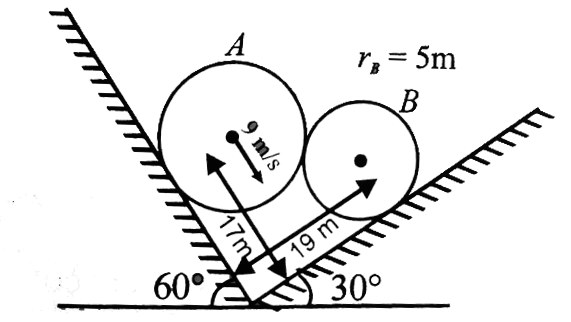Two wires of different densities but same area of cross-section are soldered together at one end and are stretched to a tension T. The velocity of a transverse wave in the first wire is double of that in the second wire. Find the ratio of density of the first wire to that of the second wire.
The correct Answer is:4
v=√Tμ=√TAρ
v1v2=√ρ2ρ1=12
ρ2ρ1=14
ρ1ρ2=4
Topper's Solved these Questions
- TRAVELLING WAVESBook:RESONANCE ENGLISHChapter:TRAVELLING WAVESExercise:Exercise- 1 PART II
Explore 30 Videos
- TRAVELLING WAVESBook:RESONANCE ENGLISHChapter:TRAVELLING WAVESExercise:Exercise- 2 PART I
Explore 21 Videos
- TRAVELLING WAVESBook:RESONANCE ENGLISHChapter:TRAVELLING WAVESExercise:Board Level Exercise
Explore 27 Videos
- TEST SERIESBook:RESONANCE ENGLISHChapter:TEST SERIESExercise:PHYSICS
Explore 130 Videos
- WAVE ON STRING Book:RESONANCE ENGLISHChapter:WAVE ON STRING Exercise:Exercise- 3 PART II
Explore 7 Videos
Similar Questions
Two wires of different densities but same area of cross section are soldered together at one end and are stretched to a tension T. The velocity of a transverse wave in the first wire is double of that in the second wire. Find the ration of the denstiy of the first wire to that of the second wire.
View SolutionTwo wires of different linear mass densities are soldered together end to end and then stretched under a tension F. The wave speed in the first wire is thrice that in the second. If a harmonic wave travelling in the first wire is incident on the junction of the wires and if the amplitude of the incident wave is A=√13cm, find the amplitude of reflected wave.
View SolutionTwo wires of different densities are soldered together end to end then stretched under tension T. The waves speed in the first wire is twice that in the second wire.
(a) If the amplitude of incident wave is A, what are amplitudes of reflected and transmitted waves?
(b) Assuming no energy loss in the wire, find the fraction of the incident power that is reflected at the junction and fraction of the same that is transmitted.
View SolutionTwo uniform wires of a the same material are vibrating under the same tension. If the first overtone of the first wire is equal to the second overtone of the second wire and radius of the first wire is twice the radius of the second wire, then the ratio of the lengths of the first wire to second wire is
View SolutionTwo different stretched wires have same tension and mass per unit length. Fifth overtone frequency of the first wire is equal to second harmonic frequency of the second wire. Find the ratio of their lengths.
View SolutionTwo wires of the same materical having equal area of cross-section have L and 2L. Their respective resistances are in the ratio
View SolutionA string of density 7.5gcm−3 and area of cross - section 0.2mm2 is stretched under a tension of 20 N. When it is plucked at the mid-point, the speed of the transverse wave on the wire is
View SolutionTwo wires each of radius of cross section r but of different materials are connected together end to end (in series). If the densities of charge carries in the two wires are in the ratio 1:4, the drift velocity of electrons in the two wires will be in the ratio:
View SolutionTwo wires each of radius of cross section r but of different materials are connected together end to end (in series). If the densities of charge carries in the two wires are in the ratio 1:4, the drift velocity of electrons in the two wires will be in the ratio:
View Solution
System is shown in the figure. Velocity of sphere A is 9 ms. Find the speed of sphere B.
View Solution

